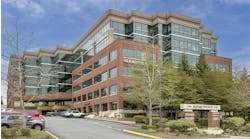By Greg Guy
Special to CONTRACTOR
AS CONTRACTORS, we should be aware just how inefficient commercial buildings can be. Studies show that in the United States, buildings consume 65% of all electrical use, 36% of total energy use and create 30% of greenhouse gas emissions. It’s no wonder that architects and contractors are being pushed to develop more environmentally friendly structures.
Until recently, however, many different criteria were used to declare a building “green,” which only added to the confusion. Fortunately, that’s changing with LEED — Leadership in Energy and Environmental Design.
LEED has developed criteria to qualify green buildings, based upon a 69-point certification checklist. A building can be certified with 40% of the available base points, receive a “silver” rating for 50%, a “gold” rating for 60%, or a “platinum” rating for 80% and more.
Many contractors allege that going green means adding 10% to 20% to the cost of a project with little chance of recovery. This is simply not true. A report by the California Sustainable Building Task Force shows a 2% investment in “greener” construction costs returns a life-cycle savings of more than 10 times the initial investment.
What’s more, a survey of recently constructed buildings shows that design factors, cost of materials and other typical building criteria can make a non-LEED building just as expensive as a LEED-certified building, with no return on investment. With some planning, you can incorporate green designs into your building — new or existing — without spending a fortune or completely revamping your design.
And let’s face facts: If the cost of oil continues to spiral upward, building owners will soon demand LEED-designed structures so they can obtain those future savings. Municipalities are also getting into the act. The city of San Francisco recently passed a law requiring all new construction be at least at the “silver” level of LEED compliance. Contractors and engineers who don’t get on board now may start losing jobs later.
LEED-certified buildings are broken down into categories that include Sustainable Sites, Water Efficiency, Energy and Atmosphere, Materials and Resources, Indoor Environmental Quality, and Innovation in Operations and Upgrades. The checklists provided make it easy to adjust your design or materials selections to earn a few extra points.
For example, piping contractors will be asked to look at waterless urinals, which use a chemical to facilitate the flush, and solar-heated water heaters to cut down on natural gas usage. You may also be asked to install a rainwater collection and storage system to irrigate landscape or for other uses.
Not every “green” design will be practical for your project, of course. Waterless urinals, for example, require more maintenance and may not be right for a building receiving heavy flushing activity. But this is the point of having a checklist to guide you.
Simply by using LEED as a framework, designers and contractors can build a LEED-certified structure that will dramatically cut energy and water use and make the interior a more pleasant place to work, thanks to better use of natural lighting and improved interior air quality.
LEED-certified buildings are still new. So far, there are fewer than 200 in the world, but another 1,600 are in the works, according to the U.S. Green Building Council. Expect that number to grow rapidly in the next decade.
But LEED isn’t just for new buildings. Any existing building can be retrofitted to meet the new criteria and most of it occurs in building maintenance — including HVAC, electrical and water usage. To be LEED-certified isn’t a one-time inspection, as it is for new construction, but an ongoing evaluation to improve efficiency and cut costs.
Because heating and cooling costs are critical in a LEED certification, begin with an audit of the systems, maintenance and energy usage. Some easy steps include replacing belts or tuning equipment for maximum efficiency. More involved steps could be to create a thermal recovery or storage system, or adding insulation. Replace worn-out plumbing fixtures with low-flow or waterless ones. You can slowly improve your building’s efficiency over time and keep gaining LEED points.
Mechanical engineers need to partner with building owners to show them how these steps today can result in lower energy costs later. That’s really the key issue for building owners — cutting costs. That’s what will be driving LEED compliance, whether it’s for an existing building or one still in the design phase. We can no longer — as a country or as contractors — take the short, easy way out by designing buildings the way we’ve done in the past. We have to look ahead and realize “going green” is the only way to go.
You can learn more about LEED-certified buildings at www.usgbc.org.
Greg Guy is president of Air Force One, a commercial and industrial mechanical engineering and contracting firm based in Columbus, Ohio. He can be reached at 614/889-0121 or via e-mail at [email protected].

